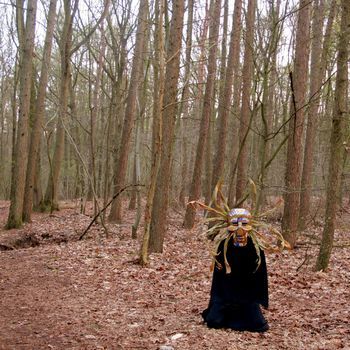Difference between revisions of "User:JeroenRijnart"
Jump to navigation
Jump to search
| (68 intermediate revisions by the same user not shown) | |||
| Line 1: | Line 1: | ||
| + | 0873511@hr.nl | Graphic Design | http://www.JeroenRijnart.com | ||
| − | + | [[File:sjamaan.jpg | 350px]] | |
| − | + | ===Ⓠ7 - [[/MICQ7 | M̠̞a͕k̤̭i̬͎̰̦̝n̪̮̳͔̪͙g̟̬̭̘̫̪̣̼ ͙͖̤̗͖̗ͅi̠̹̰̩̻̤͉̩s̪̖̬̘̺͙͕̬̘ ͔̦͙͎c̖͕̗̱͕̬̤o̥̫ṉ̮͕̙̞n̥̼̥͕̞̙̬ͅe͎̗c͇͚̩̘t̝̼͓̝͇͕̝ͅi̬̗͔n͔̦̗͓͕͈̯g̤̗͎̪͉̣]]=== | |
| − | |||
| + | ===Ⓠ9 / Ⓠ10 - [[/UTCQ9 | U͈̜̪̠̫n̼͇̹̩̟̼̭r͔̩̙̪̜̩̼a̻̗̪͎̤ͅv̥̥̤̹e̖̱̖̩̥ḻ̞̬̙̗̙̲̲̪ ̰͇̯t̘̻͔̣̬̮͕h̺̳̭̫͚̙̜̜e͎̟̩̳̘ ̜̗̭͓͙̰̺c͔o̙͎̙͎̟̱͓͙d͚̤̭e͍͖̪̙̘̲̘̼ͅ]]=== | ||
| − | |||
| − | + | ===Ⓠ13 - [[/HTBHQ13 | H̻̘o̻̤͎̝̘̤w̟ ̩̬͎t̫̱̹̮̹̩o̫̗ ͔̬b̜̳̪͎͉̱̜͎e̘̰̱̤̯ ̪̝͖̣̺̹h̳͓̜̰̬u͇̬̘̦m̩a͕̱ͅṇ̱̗̻͇̻͈ͅ]]=== | |
| − | |||
| − | - | + | ===Ⓠ14 - [[/HTBHQ14 | I̖s͎͕̖͇̗̬ͅ ͉̘͉͍̼ͅt̠̳̳̮̟h̹̟̙̬e͓r̖̫̪̹͍̜e̩̘ l̳i̙̗̫̦͇ͅf͉̮̯̟͈̙͙ḛ ͇͙̮̺ͅb̼̩̺̰̳̦̮e̩̪̟y͕͕̱o̬̳̱͓͍̠̮ṉd̺̯ ̪my̪̺̬͉ ̙̤͇̗͍dr̙͔͈͉̗ḙ͕͙̙͓̘͍am̭̲̟͚̩̮ͅs͍̞̰̝̞?̭̲͖]]=== |
| − | |||
| − | - | + | ===Ⓠ14 - [[/JRRDQ14 | R̘̹̦͍̞̟̣̖e̺̫͉͔̳̳̬̼ͅș̥̝̖e̳̭ͅa̙r̹̭̥ͅc̭̱͍̝̣͇h̥̝̲̝͙̺̦ͅ ̲̣̩͙͉ͅd͇̟̬̥ͅo̘̺͎c͙̱̝͙̣ͅͅu͍m̜̻͚̮̥̮̻ẹ̻̘̘̬̻ͅn̺̱̮͓̘̙̳ṭ͙̜̱̤]]=== |
| − | |||
| − | + | __NOTOC__ | |
| − | |||
| − | |||
| − | |||
| − | |||
| − | |||
| − | |||
| − | |||
| − | |||
| − | |||
| − | |||
| − | |||
| − | |||
| − | |||
| − | |||
| − | |||
| − | |||
| − | |||
| − | |||
| − | |||
| − | |||
| − | |||
| − | |||
| − | |||
| − | |||
| − | |||
| − | |||
| − | |||
| − | |||
| − | |||
| − | |||
| − | |||
| − | |||
| − | |||
| − | |||
| − | |||
| − | |||
| − | |||
| − | |||
| − | |||
| − | |||
| − | |||
| − | |||
| − | |||
| − | |||
| − | |||
| − | |||
| − | |||
| − | |||
| − | |||
| − | |||
| − | |||
| − | |||
| − | |||
| − | |||
| − | |||
| − | |||
| − | |||
| − | |||
| − | |||
| − | |||
| − | |||
| − | |||
| − | |||
| − | |||
| − | |||
| − | |||
| − | |||
| − | |||
| − | |||
| − | |||
| − | |||
| − | |||
| − | |||
| − | |||
| − | |||
| − | |||
| − | |||
| − | |||
| − | |||
| − | |||
| − | |||
| − | |||
| − | |||
| − | |||
Latest revision as of 12:46, 9 January 2018
0873511@hr.nl | Graphic Design | http://www.JeroenRijnart.com
